Subduction
Type of resources
Topics
Keywords
Contact for the resource
Provided by
Years
Formats
Representation types
Update frequencies
-
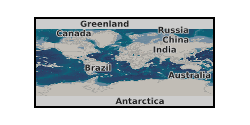
Tables of characteristic parameters for each model used in paper Agrusta et al. 2014, The effect of metastable pyroxene on the slab dynamics, DOI: 10.1002/2014GL062159 Tables of characteristic parameters for each model used in paper Agrusta et al 2017, Subducting-slab transition-zone interaction: Stagnation, penetration and mode switches, DOI: 10.1016/j.epsl.2017.02.005
-

Mineral chemistry of volcaniclasts from IODP Site 1438 drilled during exp.351 in the Amami Basin, W.Pacific Ocean. This data includes mineral chemistry of mafic minerals determined by electron microprobe at University of Leeds.
-

The data include:- sample description file: sample full names, site, hole, depth etc., a quick petrographic description of the sample and the embedding serpentinite mud, and information regarding sample selection for bulk rock chemistry - microprobe analyses of selected samples - bulk rock major and trace elements from 2 labs (SARM, Nancy and VUB, Brussels) - Oxygen Isotopes of both pore fluids and rock samples with estimated temperature equilibrium
-

3-D P-wave velocity model of the crust and uppermost mantle beneath Macquarie Island and surrounding region from teleseismic tomography. The dataset contains data and files that can be used to plot the teleseismic tomography model that was produced from broadband seismic data collected as part of the Macquarie Ridge experiment undertaken in 2020-2021 (NERC grant NE/T000082/1). The model region approximately spans 53° - 56° South and 157° - 160.5° East. The data can be accessed from the AusPass data portal at https://auspass.edu.au/networks/macquarieridge.html. The information contained in this repository can be used to plot or otherwise use this model for other purposes. The dataset includes a detailed description of the format in a README file.
-
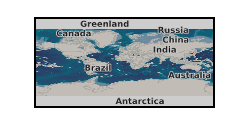
The thermal state of marine sediments controls a range of potential dehydration reactions as sediments are subducted. In thick sediment sections it is possible that reactions that would normally occur within a subduction zone start offshore of the deformation front. This scenario may be occurring at the Sumatra subduction zone (e.g. Geersen et al., 2013; Huepers et al., 2017). We have investigated this possibility by modelling the thermal and depth history of sediments offshore Sumatra. We have used a range of different assumptions about how the sediments decompact with depth, as well as testing the dependence on the seismic velocities used for depth conversion of the horizons.
-
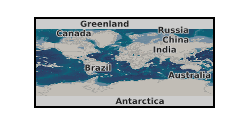
This dataset holds the output of all the simulations in the Open Access article - Garel, F., S. Goes, D. R. Davies, J. H. Davies, S. C. Kramer, and C. R. Wilson, Interaction of subducted slabs with the mantle transition-zone: A regime diagram from 2-D thermo-mechanical models with a mobile trench and an overriding plate, Geochem. Geophys. Geosyst., 15, 1739-1765, doi 10.1002/2014GC005257, 2014.
-
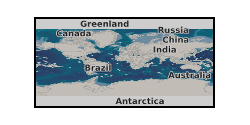
Initiation files for 2D numerical models for Fluidity code. The models simulate subduction of an oceanic plate under various conditions described in Suchoy et al., 2020. The models use temperature, pressure and strain-rate dependent composite rheology, which generates different regions without prescribing material fields. The models are similar in nature to other geodynamic models (e.g. Billen and Arredondo, 2018) and can be used for further investigation of subduction dynamics, and to reproduce the results presented in Suchoy et al., 2020. For further enquiries regarding these models please contact Lior Suchoy (Imperial College London), Saskia Goes (Imperial College London) or Rhodri Davies (Australia National University).
-
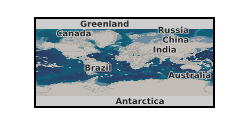
Three Published Papers; Thomson et al CMP 2014 - Origin of Sub-Lithospheric diamonds from the Juina-5 Kimberlite (Brazil): constraints from Carbon Isotopes and Inclusion Compositions http://dx.doi.org/10.1007/s00410-014-1081-8. Thomson et al Nature 2016 - Slab melting as a barrier to deep carbon subduction http://dx.doi.org/10.1038/nature16174 Burnham et al 2015 - Stable Isotope evidence for Crustal Recycling as recorded by superdeep Diamonds http://dx.doi.org/10.1016/j.epsl.2015.10.023 NERC grant abstract: Natural diamonds are formed at high pressures and temperatures deep within the Earth's interior. When diamonds form, probably from carbonate-rich fluids and melts in the mantle, they sometimes encapsulate small pieces of the minerals that occur at great depth in the Earth. These are called mineral inclusions. The diamonds are then transported from Earth's deep mantle to the surface in uncommon magmas called kimberlites. Diamonds that contain these mineral inclusions are very rare, and offer a truly unique glimpse into what is an otherwise inaccessible portion of the Earth. Some very rare inclusions provide direct samples of lithologies present in the mantle transition zone (400 - 660 km) and the lower mantle (>660 km) - these are often called superdeep diamonds. The chemistry of the inclusions along with mineral phase relations yield important information about the kinds of lithologies they originated in, and constrain the conditions of diamond formation and the depth at which kimberlite magmas form. Thus, superdeep diamonds are very important for studying the types of materials that occur in the deep Earth, for elucidating deep mantle processes, and for understanding how carbon is cycled from the surface to the mantle and back to the surface again - the deep carbon cycle. For example, some diamonds contain materials that are very similar to those occurring near the earth's surface, such as minerals akin to oceanic crust or sediments, and these often have carbon isotopic compositions akin to organic carbon - although this is a controversial subject. From this, we can conclude that surface materials can be transported to great depth, helping to constrain models of mass transfer in Earth by mantle convection. Further, by dating when the diamonds formed, for example by dating of inclusions, we can effectively place time constraints in the geodynamic processes involved in diamond formation and uplift in the mantle. Inclusion-bearing diamonds suitable for study are very hard to come by. We are very fortunate to be in possession of several large suites (over 200 inclusion-bearing diamonds in all!) of diamonds from kimberlite pipes in the famous Juina region of Brazil, a region known for its superdeep diamonds. Our previous study on diamonds from the Juina region has yielded some fascinating results, and has led to a model of material recycling beneath Brazil that we have recently published in the journal Nature and in Contributions to Mineralogy and Petrology. We now wish to extend our investigations by studying new suites of diamonds from Juina to test our current model, and to make high-pressure temperature experiments that will allow us to determine at what depths the inclusions formed and equilibrated, and will provide information needed to constrain the rates at which diamonds were transported in the solid-state mantle, possibly in a mantle plume. Here, we propose a three-year project for a comprehensive mineralogical, geochemical, isotopic and experimental investigation of these unique diamonds and their mineral inclusions.
-

Data are either (1) depths and spacings between stylolites and faults within Unit IV, (2) images from IODP drill core image logs of the locations of samples observed, (3) photomicrographs and flatbed thin section scans of thin sections cut from samples, (4) SEM BSE or EDS data collected at Cardiff University. These data form the basis of: Leah et al. "Brittle-ductile strain localisation and weakening in pelagic sediments seaward of the Hikurangi margin, New Zealand", Tectonics, Submitted. Images and data from samples collected at IODP Expedition 375 Site U1520 (38°58.1532'S, 179°7.9112'E, 3522.1 mbsl). This is just seaward (east) of the trench of the Hikurangi Margin, New Zealand.
-
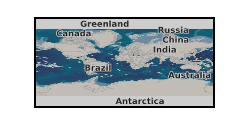
4 tables, and accompanying references, from paper entitled ‘Increased biomass and carbon burial 2 billion years ago triggered mountain building’. Tables record orogen depositional ages, deformation ages, Total Organic Carbon contents and organic carbon isotope compositions, for 20 orogens of Palaeoproterozoic age.
 NERC Data Catalogue Service
NERC Data Catalogue Service